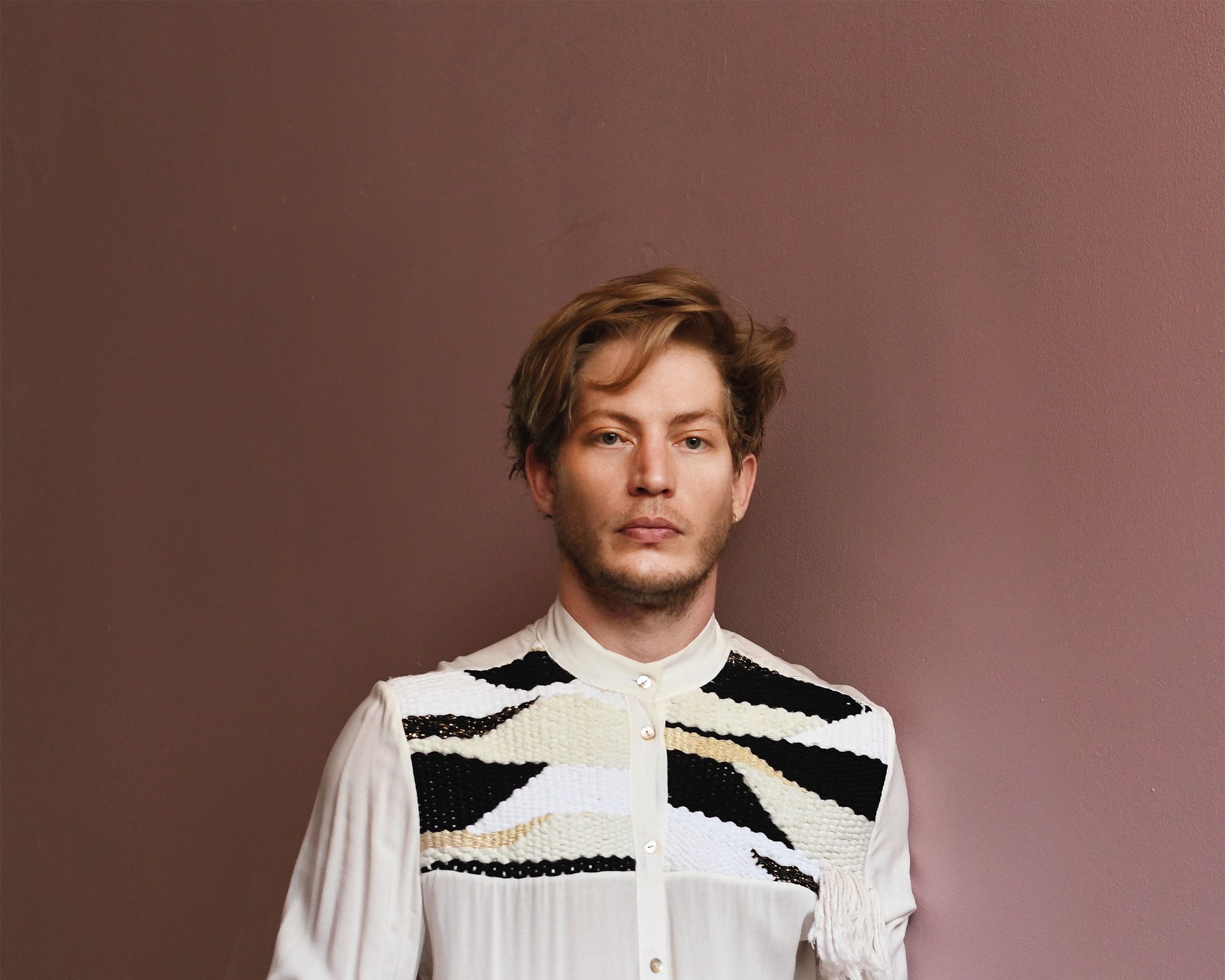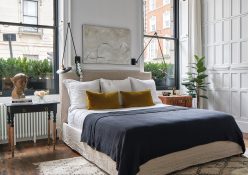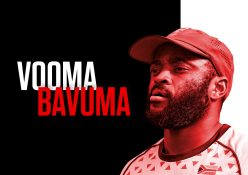Ceramicist Jan Ernst creates functional artworks that speak of his fascination with light, landscape and living with things. His upcoming exhibition is an ode to what he’s picked up along the way and taken home with him.
Wherever I go, I collect things. I can just see the face of my partner, Colin, as he says ‘Agh, nog ’n klip?’ or ‘Nog ’n blaartjie? Can’t you please just leave it?’”, chuckles Jan. “But to me, it’s about collecting a language of found objects. You can never fully know a language in your entire life, and I am forever finding nuances.”
It is that language that is used to comprehend and express how he understands the world around him, from the ethereal beauty of a Cape Town pine forest to the eeriness of a Karoo night. This aspect came through in his work as an architect, but more recently in his functional artworks of clay, bronze and plaster. Unglazed and highly textured, each is as purposeful as it is sculptural and artistic. And a recent epic roadtrip through the Karoo, planned solely to add to his “library of found objects”, is his most intentional – and personal – venture into the nature of things.
“I am just fascinated by candlesticks and light in general. Even as a little boy – I would get in a lot of trouble because of fires!”
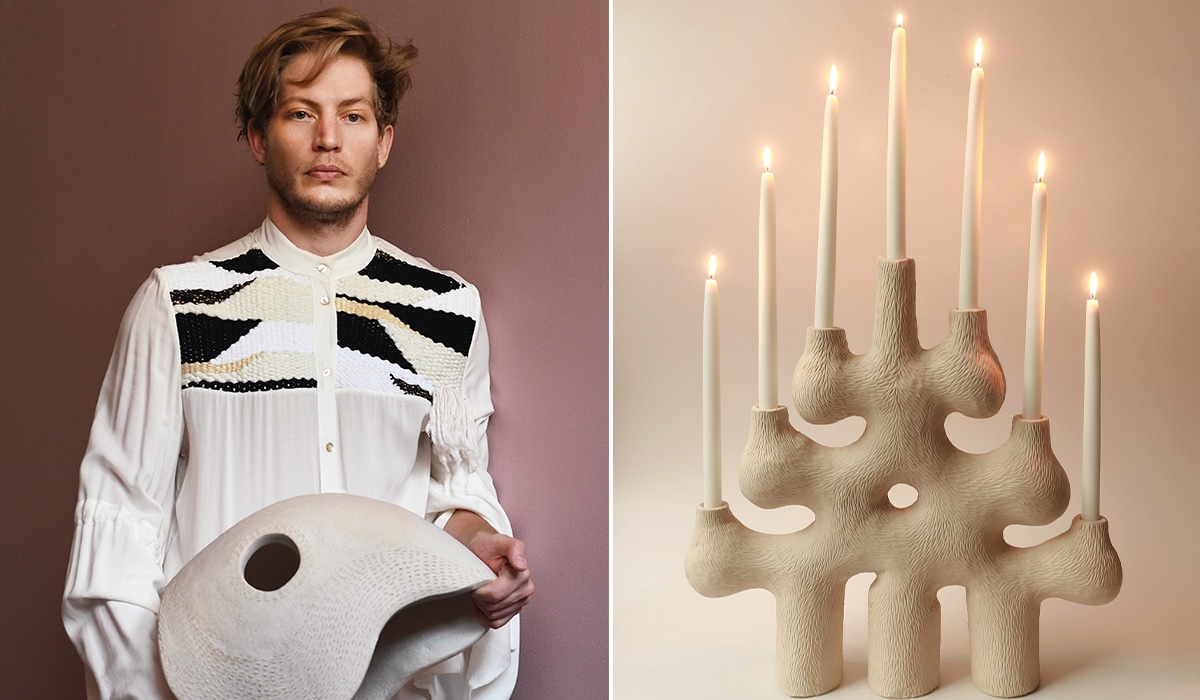
Signs from the universe
“The universe sent me three signs that I shouldn’t be an architect,” Jan laughs, smiling at the absurdity of life. Number one, he explains, was when he was retrenched from his first job at a corporate architecture firm. “I felt it was a good place to start working in architecture, but there was no creativity in it. My strength lies in design and architecture school had given the impression that I would be able to use it in my work. But then I ended up doing toilet schedules and draining layouts. I was extremely frustrated,” he reflects.
Jan joined a smaller firm where he could happily be a jack-of-all-trades and learn on the job. But a year in, retrenchment knocked on the door again. “I then started my own practice with a good friend and things were going well – until the pandemic,” he says shaking his head, but smiling. “I had to realise that maybe the universe was trying to tell me something…”
And maybe it was; to apply what he learnt as an architect to clay. During lockdown, he asked his partner Colin Braye (the founder of Vorster & Braye Ceramic Design Studio) for a bag of clay. “I had a lot of time on my hands, and I started playing around with it in my apartment. I kind of got addicted to it. I started sharing photos to my personal social media and people started liking them and asking to buy the pieces. I was so surprised. I was still making them in my apartment and driving the wet clay to the kiln at Colin’s studio – not a good idea!” he chuckles. After a few months of gaining momentum, Jan moved the operation from his apartment to the studio. With just six months experience under his belt, he nevertheless started training an assistant, Arnold Masiko, to keep up with the demand. Three years later, Arnold is still his right-hand man in a team of five ceramicists.
Jan let go of his last architecture client after he was invited to France and Belgium to exhibit his ceramics and take part in a residency in late 2022. He was all in: he got his own studio, hired a bigger team and managed an influx of interest from international galleries. “The amazing thing is, I wasn’t looking for it,” Jan reflects. “It just came my way. I know this doesn’t happen in real life in South Africa, but I think time, talent and opportunity aligned for me.”
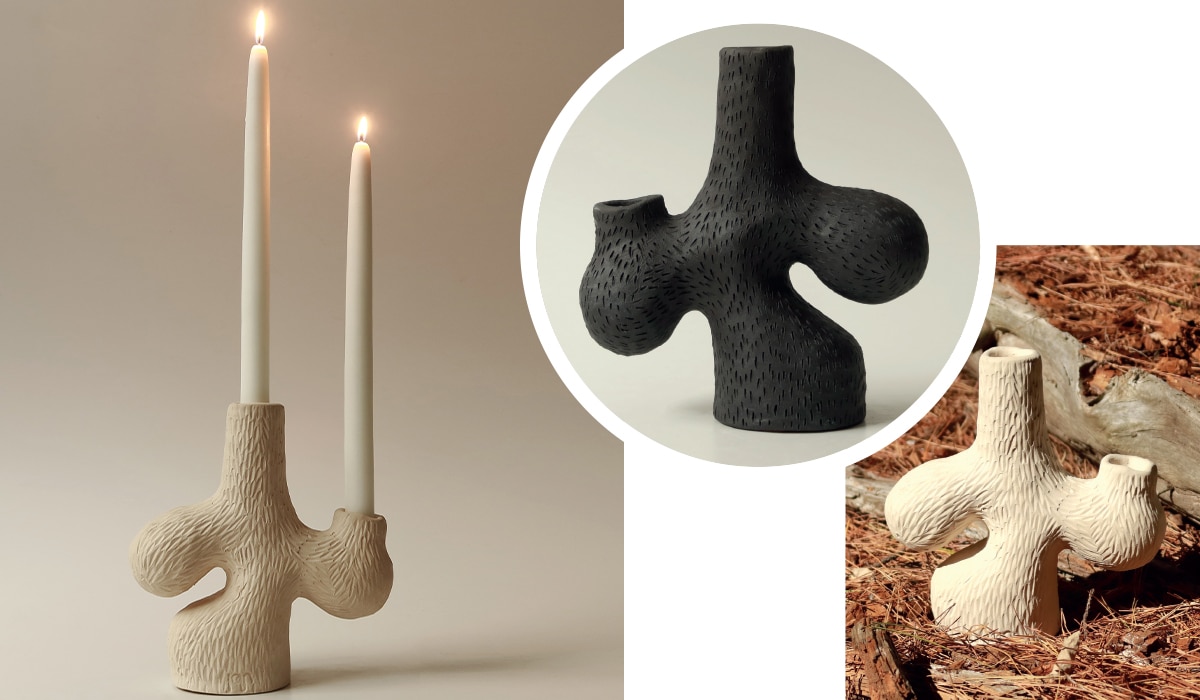
Learning the language
Although Jan’s design process is never the same, it is influenced by what he learnt at architecture school. “Every school has its own architectural philosophy, and at Nelson Mandela University that was ‘critical regionalism’, which is basically interpreting your immediate environment through a modernist lens,” he explains. “So I think, in a way, that shaped the way I read the physical world around me. It has definitely influenced my understanding of a place.”
And a sense of place is at the centre of his works. He uses the example of the first mural he did for a South African home in Simon’s Town, called ‘Safe Haven’. “We knew it needed to be outside and that the homeowner wanted lights. The house sits right at the top and looks out over False Bay,” he explains. “I think it’s incredibly beautiful the way the layers of the mountain come down to the sea and the texture of the vegetation. The mural echoes those layers, and the negative space echoes the shape of False Bay.” Murals are new in his repertoire, but a mainstay since those early days of lockdown has been his iconic candelabra. “I am just fascinated by candlesticks, and light in general. Even as a little boy – I would get in a lot of trouble because of fires!” he says. He explains that he often “goes into nature” to find objects which he turns into aspects of his ceramics. “I went for a walk in Newlands Forest with the mindset of finding things to create a candelabra. The texture of the Forest candelabras is inspired by the pine needles, and the pinecones is what informed the bulbs and the tree-like structure. Then you kind of have a recipe. When the recipe is clear, you can shift elements back and forth until you get different compositions.”
Functionality is at the front of his mind as he designs. “It feels a bit weird when I do something that’s purely sculptural. I believe form follows function, so I shape a cup knowing I need to be able to reach up and get my hand in there to unscrew a bulb. That function already tells me a lot about the form-making,” he explains.
“It feels a bit weird when I do something that’s purely sculptural. I believe form follows function”
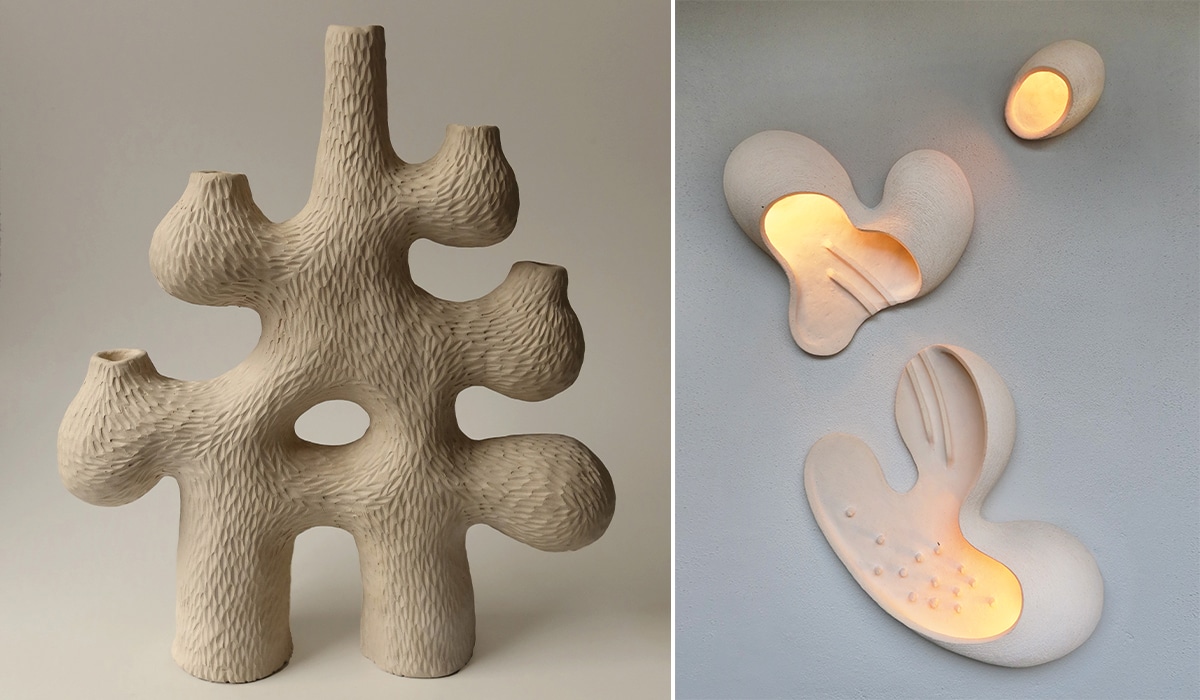
Portrait of an artist
When it comes to their own home, Jan and Colin tend to keep things minimalist. “Everything in our house is something we either truly need or that we made ourselves. We have very different styles – Colin’s is more modern and cleaner, and mine is more textured and organic, but it works. I have recently started collecting art by trading my pieces with other artists for artworks that truly inspire me,” he shares.
“I don’t think we consider enough how we live with objects,” Jan reflects. “When I start designing something, I see very clearly where it will live in someone’s house, even though I hardly ever see where my art ends up – and maybe I prefer it that way,” he jokes. “I want people to engage with the object. To me, a candelabra is such a good example of this. When a friend visits, I’m going to pick it up and put it on the dining table. I’ll be aware of how time passes as the wax melts and collects on the candelabra. That’s why I hardly ever clean off the wax, because I can see the time I’ve spent with people. I’m touching it, engaging with it and transferring that to the people around me. The functional part forces people to engage with the things they live with.”
Although home decor and furniture can be expensive, and of course we want to cherish the things we love, we shouldn’t be too precious about them either, believes Jan. “My mom used to have all these old tins lining the kitchen walls, standing empty. I used to think it was such a waste to let such lovely containers go unused. It was the same with the porcelain crockery she inherited, which lived in the sideboard that we were never allowed to touch. Having tea with your mom and granny is such a beautiful thing, so why not use the most beautiful thing you have? If you have nice stuff, use it – that’s the point!”
When the recipe is clear, you can shift elements back and forth until you get different compositions
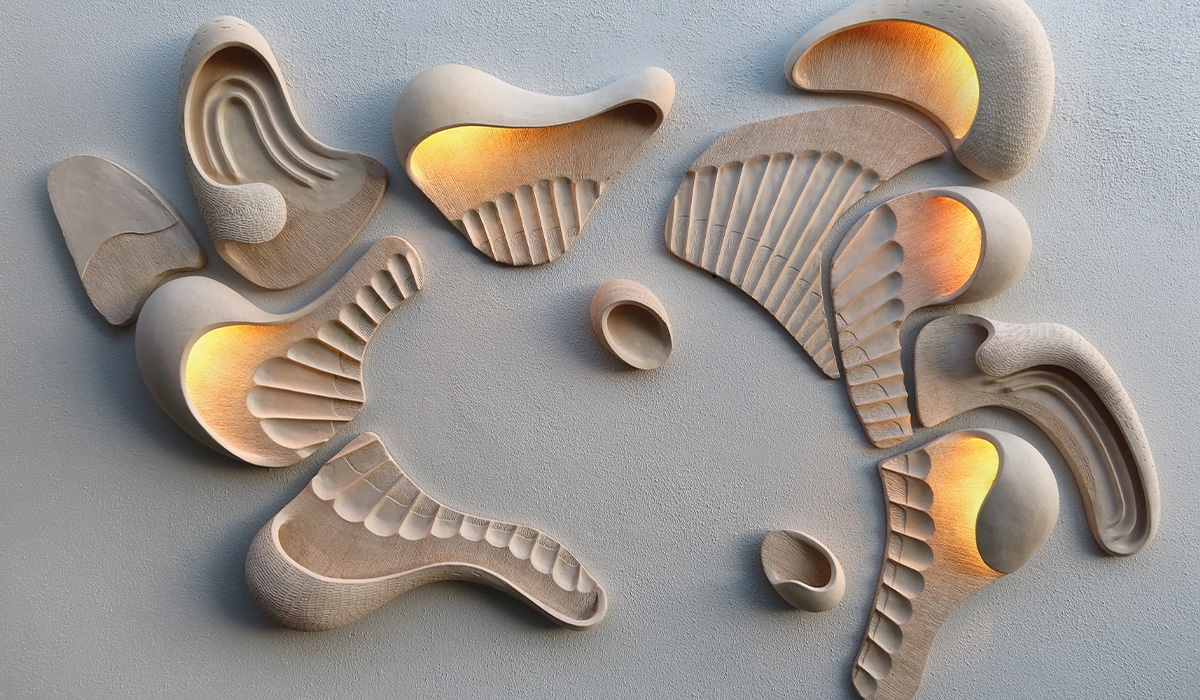
A new language for home
Jan is headed back into nature for his latest collection. This time, the nature of the Karoo – in every sense. “We’re going on a 2 000 km roadtrip and stopping in dorpies all along the way just to document it all. The Karoo has been done before, it’s not a new idea, but I want to deconstruct the Karoo as we do it.” “To me, the Karoo is not just the occasional succulent or drop of rain. It’s where I grew up. It’s my experiences of the beautiful gabled Cape Dutch manor houses and also my friend’s house with 20 Dobermanns and a broken couch. The Karoo often has what I call ‘sick’ interiors, which are not particularly pretty to look at. It’s the huge blue sky with its harsh bright light and the uncomfortable eeriness of the Karoo at night. I want to capture those contrasts in photography and found objects. We’ll bring the found objects back to display them as part of the exhibition.” It’s the first time that he’s diving this deep to create a new collection, Jan shares. “Design comes very easily to me, so I can sit and sketch five items in one day to make a collection. They might not all be great, but they will pass. This collection, I feel, is something that needs to be far more intentional and far truer to the place that I grew up in. Let’s see what I find out there…”
Words by: Christi Nortier
Photos: Supplied



